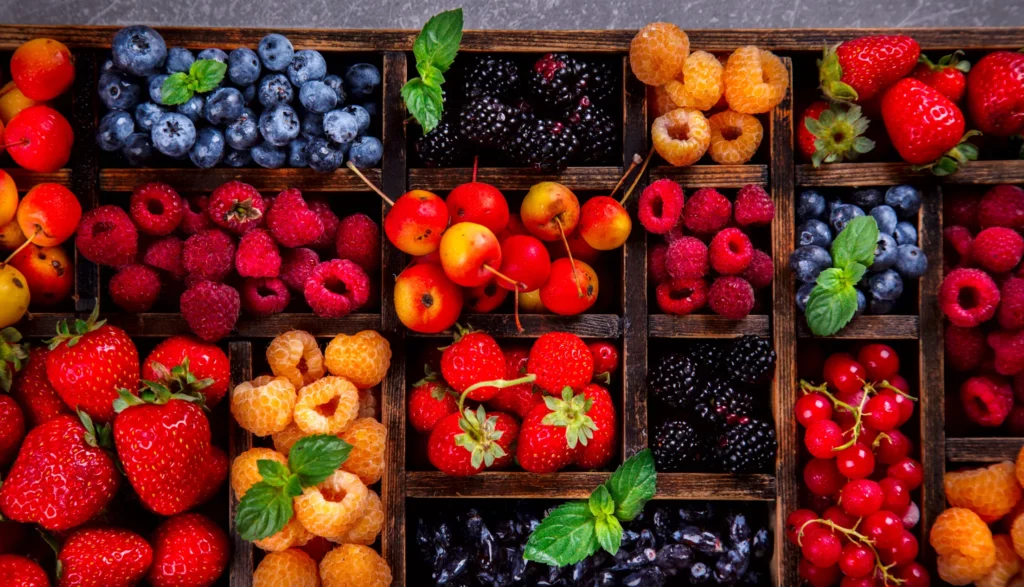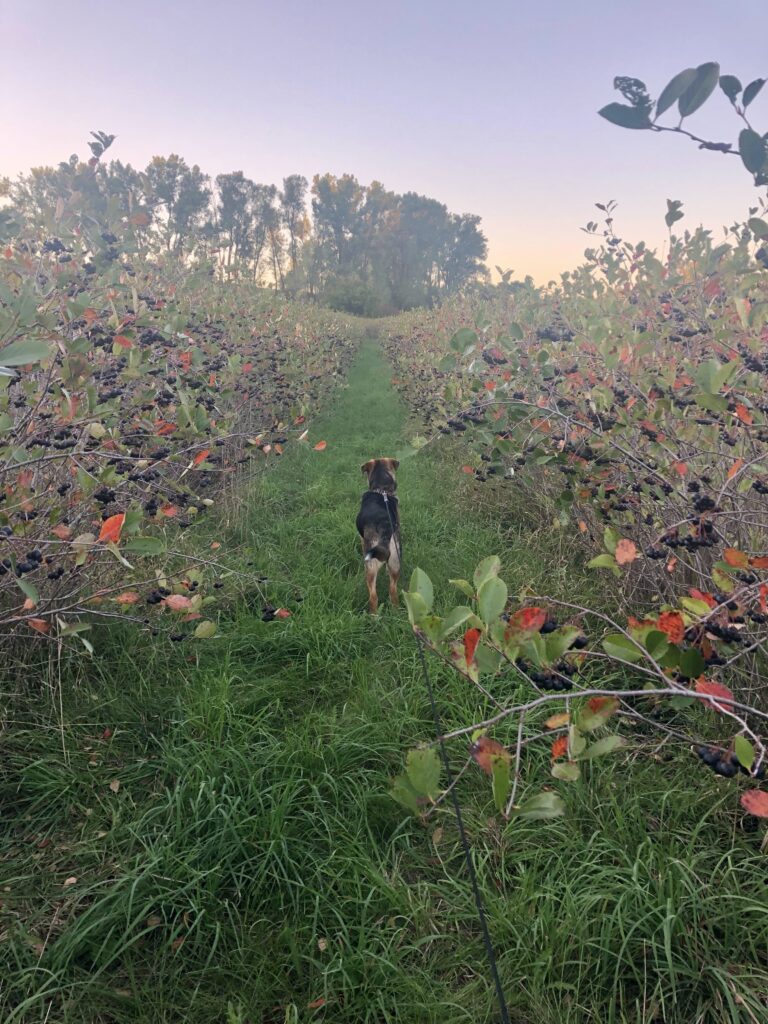
When you hear the term “superfruit,” what’s the first fruit that comes to mind? Is it acai, goji, noni, maqui or maybe mangosteen?While all of these fruits are great, there is one that deserves a place at the very top of these powerhouses: Aronia berry. This article provides an overview of some of the additional superfruits and a brief summary of potential uses and benefits. Let’s get started!
Acai
Acai is a small, purple berry from the Amazon Rainforest. It’s been heavily marketed in recent years and was even featured on The Doctor Oz Show. In addition to being rich in antioxidants, acai berries have been linked to weight loss prevention and other health benefits. The best part about acai berries is that no extra ingredients are necessary to experience health benefits. Just add a handful of the raw, frozen berries to smoothies, yogurt or cereal for an instant antioxidant boost!
But are the claims legitimate?
Sort of. The antioxidant properties in acai berries may have been oversold, but they are still beneficial for health. According to the comprehensive USDA database for polyphenol levels in foods, fresh Aronia berry contains 7X more polyphenols than acai!
Goji
Goji berries come from the goji shrub, also known as wolfberry. These little red berries are packed with antioxidants and nutrients. The Himalayan region where goji berries grow has used them for thousands of years to promote well-being.
Goji juice is available in many health food stores have been around for centuries, but they are enjoying newfound popularity in Western countries. These dried red berries are being added to smoothies, juices, and energy bars with increasing regularity because of their impressive nutrient content.
Goji berry also contains carotenoids which can be beneficial for eyesight.
Noni
Noni, also known as Indian Mulberry, is a fruit found in the rainforests of the Pacific Islands. Polynesian people have been using this fruit for medicinal purposes for over 2000 years to treat infections, constipation, and arthritis (by reducing inflammation). The noni fruit is stinky and is usually mixed with the juices of other fruits to mask the unpleasant smell. Noni also contains an abundance of vitamins and minerals – nine times more beta-carotene compared to carrots!
Maqui
Maqui is a small, purple berry that grows on trees in Chile and Argentina. The health benefits of maqui fruit are attributed to their high polyphenol content as well as their wide variety of anthocyanins and flavonols. The antioxidant properties of maqui berries have been reported to be significantly greater than acai.
Mangosteen
Mangosteens are tangy, tropical fruits from Southeast Asia that are high in antioxidants. Traditionally, mangosteen has been used to treat digestive problems and even cancer. Unfortunately, they don’t travel well and aren’t readily available in the United States as fresh fruit because of their short shelf life. Mangosteen is commonly consumed as a juice or supplement.
There are many others! Some of the more interesting names include marula, camu camu , baobab fruit, and feijoa.
So which is the best?
Well, it depends on what you’re looking for.
- Are you looking for a superfruit that is grown in the United States?
- Has the highest documented levels of polyphenols of all of these fruits?
- Has the highest documented levels of anthocyanins of all of these fruits?
- Has the highest levels of quercetin and proanthocyanins of all these fruits?
- Can be easily added to smoothies, cereal, and yogurt without additional ingredients?
If you answered yes to any of the above, then you are in luck because Aronia berry checks all the boxes in one power-packed super fruit!

Even though aronia berries are less common in this part of the world, they are not really a “new” type of berry. Originally from North America, the history of this berry extends back to precolonial times and is associated with the traditions of Native Americans.
Historically, black chokeberry was used by the North American Forest Potawatomi tribe. They called the fruits nîki’mînûn or sakwako’mînûn and used them to make a tea for the treatment of colds. Both the Potawatomi and Abnaki tribes used the fruit for food. The berries were used in the preparation of pemmican, a nutritious and long-lasting foodstuff prepared from animal fat, dried powdered meat, and sometimes fruit. According to an ethnobotanical account from 1933, the Forest Potawatomi reported that “they eat the berries from this plant but they are entirely too bitter to suit the white man.” Among North American settlers, both the berries and the bark were used as an astringent.
Commercial cultivation of black chokeberry is a relatively recent development. Although the plant is a North American species, Ivan Mitschurin, a Soviet botanist, discovered it in 1904 and named it A. melanocarpa after noticing the unusually large fruits at the Belozersk Forestry Office in Russia. He began breeding experiments in Russia in 1910 with the goal of developing a sweet-tasting rowan berry by crossing black chokeberry with Sorbus or Mespilus species. His work resulted in two cultivars, ‘Likernaja’ and ‘Desertnaja Michurina.’ In 1982, Mitschurin’s varieties were named as a new hybrid species A. x mitschurinii.
The following Aronia varieties have been developed through hybridization:
• Nero, Viking, Ahonnen from Finland
Aronia x prunifolia is a cross between Aronia melanocarpa and Aronia prunifolia, which was made in Finland by an amateur breeder in 1945. The variety Ahonnen (or Uhto) was selected from this cross. In 1964, the selection ‘Viking’ was made from it. With its particularly large fruit, Ahonnen has always been the most important cultivated variety of Aronia in Europe.
• Rubina, Hugin from Sweden
• Fertödi from Hungary
• Aron, Serina und Hakkija from Denmark
• Moravska sladkoploda from Slovakia
• Kashamachi und Mandschurica from Estonia
Aronia was reintroduced into the U.S. in the 1970s by botanist Robert F. Hoover while traveling in eastern Siberia. He brought back seeds of nine cultivars, which have been evaluated at numerous research sites since 1980. These Aronia cultivars include ‘Nero’ (or ‘Markka’), ‘Lapponica’, and ‘Rubin’. An excellent selection, especially for juice production, is the Aronia x prunifolia ‘Nero’.
So which variety of Aronia is right for you?
At Tyrian Industries we primarily utilize the Viking variety. Research has demonstrated that it contains some of the highest polyphenol levels among the various cultivars and it grows exceptionally well in the rich farmland of the midwest.

